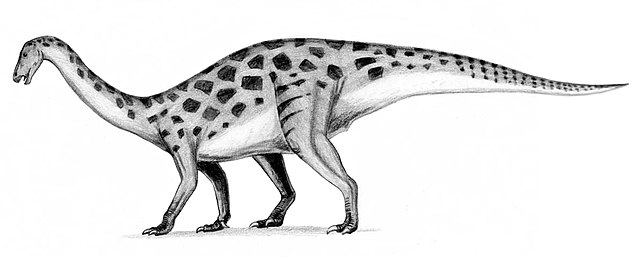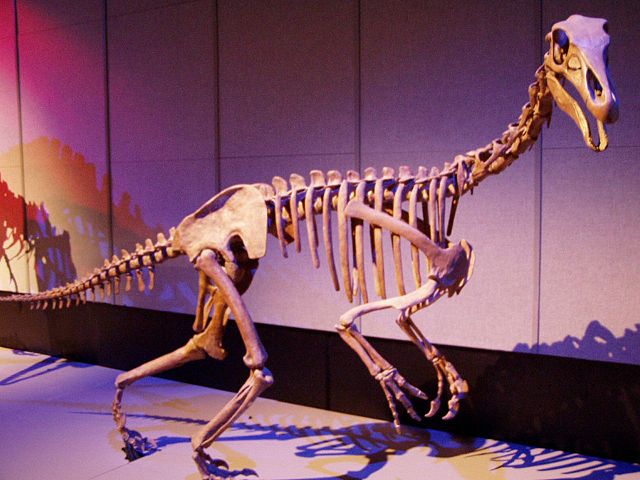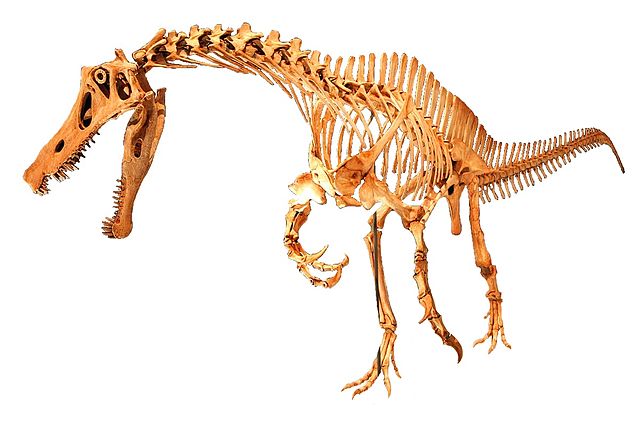Therizinosaurs are an extinct group of large herbivorous theropod dinosaurs whose fossils have been found across the Middle Jurassic to Late Cretaceous deposits in Europe, Asia and North America. Various features of the forelimbs, skull and pelvis unite these finds as both theropods and maniraptorans, making them relatives of birds. The name of the representative genus, Therizinosaurus, is derived from the Greek θερίζω and σαῦρος. The older representative, Segnosaurus, is derived from the Latin sēgnis ('slow') and the Greek σαῦρος.
Therizinosauria
Forelimbs of Therizinosaurus, specimen IGM 100/15 displayed at Nagoya City Science Museum
Outdated restoration of a plateosaurid-like, quadrupedal Erlikosaurus. Therizinosaurs were often depicted this way until they were definitively identified as theropods
Reconstructed skeleton of Alxasaurus from China, the completeness of which confirmed therizinosaurs as theropods in 1993
Theropoda, whose members are known as theropods, is a dinosaur clade that is characterized by hollow bones and three toes and claws on each limb. Theropods are generally classed as a group of saurischian dinosaurs. They were ancestrally carnivorous, although a number of theropod groups evolved to become herbivores and omnivores. Theropods first appeared during the Carnian age of the late Triassic period 231.4 million years ago (Ma) and included the majority of large terrestrial carnivores from the Early Jurassic until at least the close of the Cretaceous, about 66 Ma. In the Jurassic, birds evolved from small specialized coelurosaurian theropods, and are today represented by about 10,500 living species.
Image: Carnotaurus skeleton in Bonn White Background
Image: Coelophysis (1) white background
Image: Stan T. rex in Oslo white background
Image: Irritator challengeri mount 01 white background








